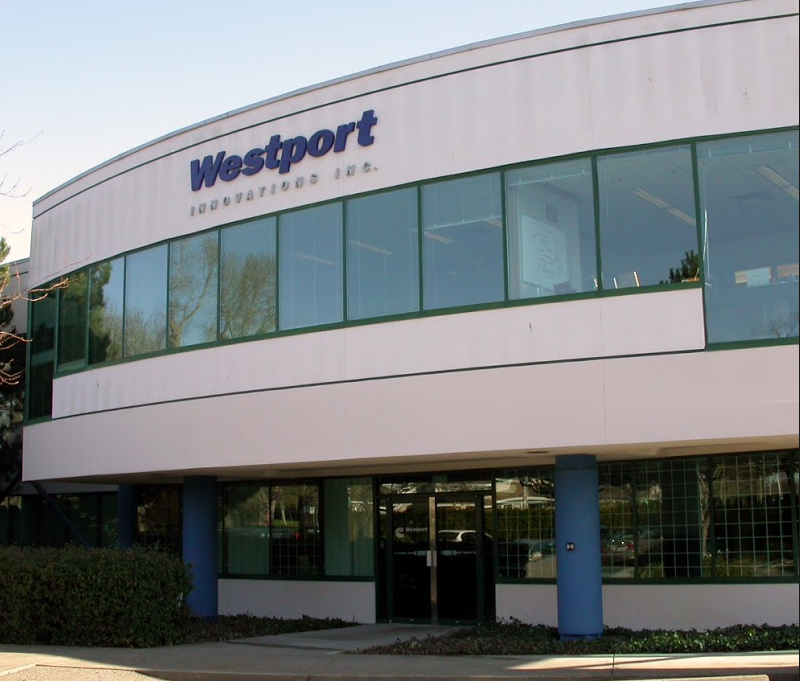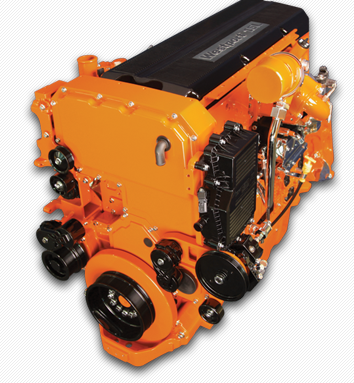High Pressure Direct Injection Platform from Westport™
 Westport Innovations has unveiled its next generation of high pressure direct injection technology platform.
Westport Innovations has unveiled its next generation of high pressure direct injection technology platform.
Dubbed “Westport™ HPDI 2.0,” this new generation of natural gas technology is designed to provide global vehicle and engine original equipment manufacturers (OEMs) with a vertically integrated natural gas solution with breakthrough price, performance, and fuel economy. Developed to the most rigorous OEM quality standards, Westport™ HPDI 2.0 system components will be manufactured in state-of-the-art, high-quality facilities, offer ready integration into OEM operations globally, and provide an attractive way to reach scalable volume deliveries as natural gas markets mature and grow.
Westport is now working with seven OEM applications with engine sizes ranging from trucks to trains at various stages of development with the goal of vertically integrated Westport™ HPDI 2.0 OEM product lines.
Background on Westport™ HPDI
Westport™ HPDI 2.0 is the only natural gas technology capable of delivering performance and fuel economy equivalent to that of current high performance diesel-fueled engines, but with diesel substitution of over 90%. This combination of high performance and high efficiency is, according to the company, critical for heavy-duty engines in demanding commercial applications.
By way of background, diesel engines have dominated commercial vehicle and heavy-duty off-road applications for decades, despite higher initial costs for diesel engines compared to gasoline engines, and the recent volatility and higher prices for diesel fuel. Energy efficiency, engine durability, high torque, low maintenance, and industry familiarity with the diesel engine mean that overall life-cycle cost of operation have kept the engine a mainstay in commercial vehicles.
Now, Westport™ HPDI will allow diesel customers to switch to natural gas, which is less expensive than diesel fuel in most parts of the world, without sacrificing performance or energy efficiency. Engines incorporating Westport™ HPDI 2.0 technology are engineered to be as similar to diesel-fueled versions as possible, minimizing capital investment and operational changes in the field.
Higher energy efficiency simply means less fuel burned, resulting in more money that the operator can save, and lower greenhouse gas emissions. The compression ratio of an engine with Westport™ HPDI is the same as the diesel engine on which it is based, which results in fewer changes to engine components and preservation of the fuel economy benefits associated with high compression.
 Westport’s proprietary, patented HPDI technology utilizes the same Diesel thermodynamic cycle used by diesel fuel. This Diesel cycle is inherently more efficient than the Otto thermodynamic cycle used by spark ignited (SI) gasoline and natural gas engines. Aside from the increase in efficiency, typical Diesel cycle engines—including engines with Westport™ HPDI—do not use a throttle to control the air-fuel ratio, as the gas directly injected into the combustion chamber at the end of the compression stroke can burn over a wide range of air fuel ratios.
Westport’s proprietary, patented HPDI technology utilizes the same Diesel thermodynamic cycle used by diesel fuel. This Diesel cycle is inherently more efficient than the Otto thermodynamic cycle used by spark ignited (SI) gasoline and natural gas engines. Aside from the increase in efficiency, typical Diesel cycle engines—including engines with Westport™ HPDI—do not use a throttle to control the air-fuel ratio, as the gas directly injected into the combustion chamber at the end of the compression stroke can burn over a wide range of air fuel ratios.
Most current natural gas engines used in mobile applications require up to 30% reduction in compression ratio and 15% to 20% reduction in peak torque output to avoid the risk of engine-damaging knock, which reduces fuel economy and performance. Late-cycle direct injection of fuel—a principle fundamental to the Westport™ HPDI architecture—is the only combustion approach that eliminates the danger of engine knocking. In SI gasoline and natural gas engines, air and fuel are pre-mixed before entering the combustion chamber.
Westport™ HPDI uses natural gas as the primary fuel along with a small amount of diesel as an ignition source. The two fuels are not pre-mixed with the intake air before they enter the combustion chamber so there is no risk of engine knock and therefore no need to lower the compression ratio and peak torque output. As compared to diesel fuel, directly injected natural gas burns with a lower adiabatic flame temperature and has a low propensity to the formation of carbon particles and therefore offers inherent nitrous oxide (NOx) and particulate matter (PM) emissions benefits that provide more product engineering flexibility to allow powertrain designers to increase potential performance and customer value.
Animation of how Westport™ HPDI combustion works can be found at: http://www.westport.com/is/core-technologies/hpdi.
Equally important to vehicle performance and operability, fuel storage and delivery is often ignored or treated as an afterthought when converting engines to use natural gas. Westport vehicles and technology have logged millions of miles over the past few years, and it is clear that high performance natural gas engines will need sophisticated fuel delivery and storage systems to fully exploit the potential of natural gas as a primary fuel.
HPDI 2.0 continues the evolution of Westport natural gas storage and delivery systems with a new generation of proprietary fuel tank, fuel pump, and system controls that can match the vehicle range, performance, and driveability of diesel whether the vehicle is a long-haul truck, a locomotive, or a ship.
Migration Path for HPDI 1.0
Westport first generation HPDI systems have been delivered on more than 1,200 Peterbilt and Kenworth trucks since its first wide-scale introduction in 2010.
In partnership with Peterbilt and Kenworth dealers, Westport will be able to offer compatible next generation system features to our existing customers, as some HPDI 2.0 components are applicable to first generation HPDI. The benefits are expected to be reduced costs, improved components, and increased durability and performance.
Market Opportunity for HPDI Natural Gas Vehicles
According to the International Energy Agency, world oil demand for commercial road freight and other heavy-duty transport modes, including rail, totalled approximately 273 billion gallons in 2012. The U.S. Energy Information Association predicts that the price of LNG will remain below the price of petroleum diesel for at least the next two decades and be approximately 33% below in 2035, with a gallon of diesel expected to be selling for $4.55 compared to a diesel gallon equivalent of LNG at $3.05. At these rates, if the world changes the way it moves goods by shifting to natural gas, these transport modes could save over $400 billion per year. The market for natural gas in transportation in China is bourgeoning. According to the International Energy Agency, natural gas demand in China’s commercial road transport sector will reach around three times higher than today’s levels by 2035.
About Westport
Westport engineers the world’s most advanced natural gas engines and vehicles. More than that, we are fundamentally changing the way the world travels the roads, rails and seas. We work with original equipment manufacturers (OEMs) worldwide from design through to production, creating products to meet the growing demand for vehicle technology that will reduce both emissions and fuel costs. More Information at: www.westport.com.
Category: Engines & Drivetrains, Fuel & Oil, General Update, Green










